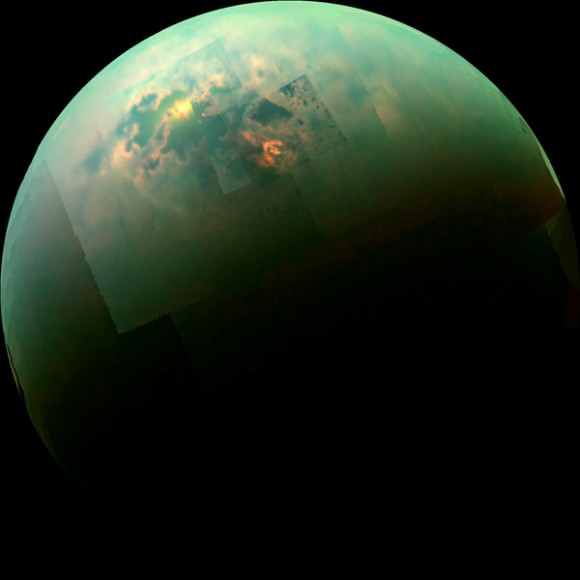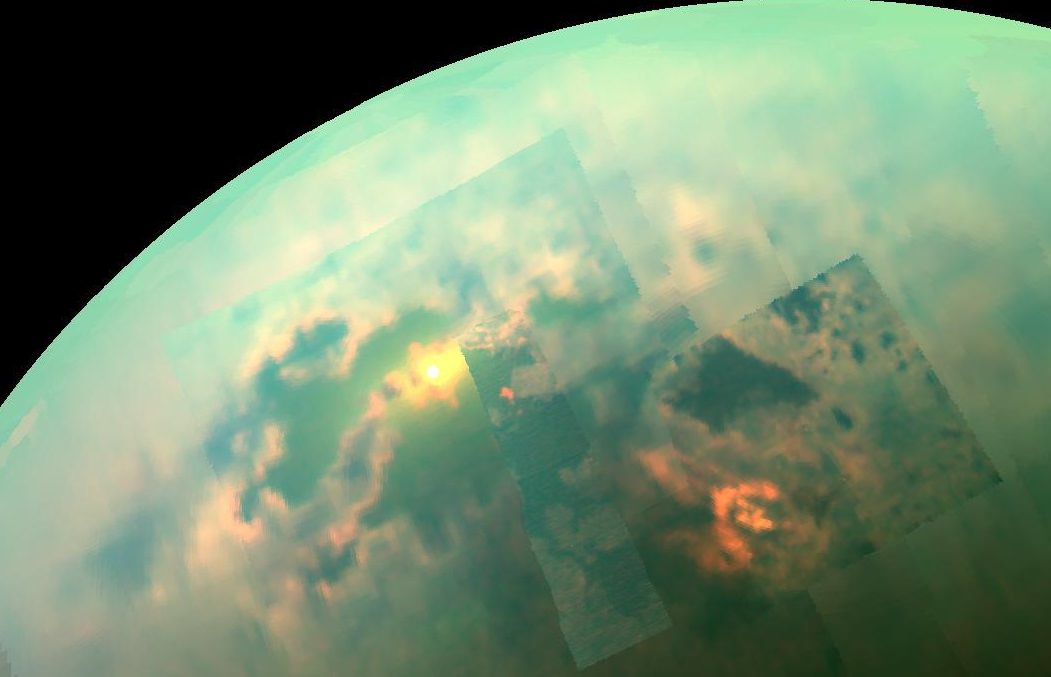See that yellow smudge in the image above? That’s what the Sun looks like reflecting off the seas of Titan, that moon of Saturn that excites astrobiologists because its chemistry resembles what early Earth could have looked like. This image represents the first time this “sunglint” and Titan’s northern polar seas have been captured in one mosaic, NASA said.
What’s more, if you look closely at the sea surrounding the sunlight, you can see what scientists dub a “bathtub ring.” Besides looking pretty, this image from the Cassini spacecraft shows the huge sea (called Kraken Mare) was actually larger at some point in Titan’s past.
“The southern portion of Kraken Mare … displays a ‘bathtub ring’ — a bright margin of evaporate deposits — which indicates that the sea was larger at some point in the past and has become smaller due to evaporation,” NASA stated. “The deposits are material left behind after the methane and ethane liquid evaporates, somewhat akin to the saline crust on a salt flat.”

The sunlight was so bright that it saturated the detector on Cassini that viewed it, called the Visual and Infrared Mapping Spectrometer (VIMS) instrument. The sun was about 40 degrees above the horizon of Kraken Mare then, which is the highest ever observed on Titan.
The T-106 flyby Oct. 23 was the second-to-last closeup view Cassini will have of Titan this year. The spacecraft has been circling Saturn’s system for more than 10 years, and is now watching Titan (and Saturn’s) northern hemisphere enter summer.
Titan is covered in a thick, orangey atmosphere that hid its surface from scientists the first time a spacecraft zoomed by it in the 1980s. Subsequent exploration (most especially by Cassini and a short-lived lander called Huygens) have revealed dunes on and near the equator and at higher altitudes, lakes of methane and ethane.
Source: Jet Propulsion Laboratory


“was actually smaller at some point in Titan’s past”
The next line says the opposite:
“which indicates that the sea was larger at some point in the past and has become smaller due to evaporation”
Corrected, thanks.
Backstroke
Fish trip anyone? What would you use for bait? Frozen ethanol?